 In my research I have been trying to understand the dynamics of plasmas in the presence of ultra intense fields, or extreme plasma physics (preprint/white paper describing the emerging field of extreme plasma (astro)physics), to answer some long-standing questions:
In my research I have been trying to understand the dynamics of plasmas in the presence of ultra intense fields, or extreme plasma physics (preprint/white paper describing the emerging field of extreme plasma (astro)physics), to answer some long-standing questions:
- Are the collective plasma dynamics affected by QED and strongly radiative processes driven by intense fields, and can we identify signatures for these processes in the laboratory and in astrophysics?
- Can we mimic in the laboratory the kinetic microphysics of relevance for extreme conditions in the Universe?
- Can we harness the highest laser intensities for inertial fusion energy or for secondary sources of relevance for applications?
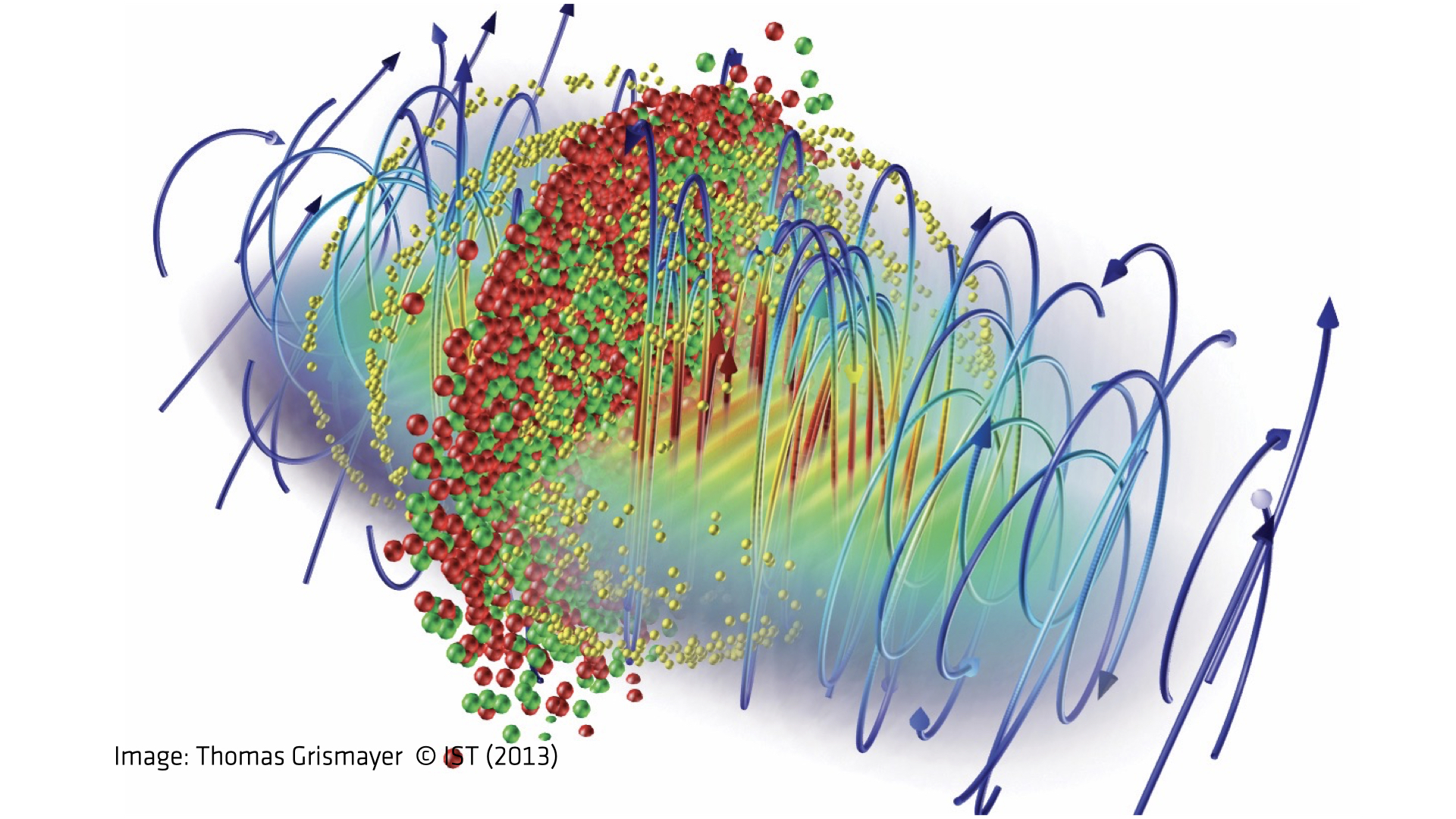
QED Plasmas
I am interested on how QED or strong radiative phenomenology impacts collective plasma dynamics. This is of relevance for high intensity lasers and particle beams, and in the magnetospheres of compact objects. | Collection of papers
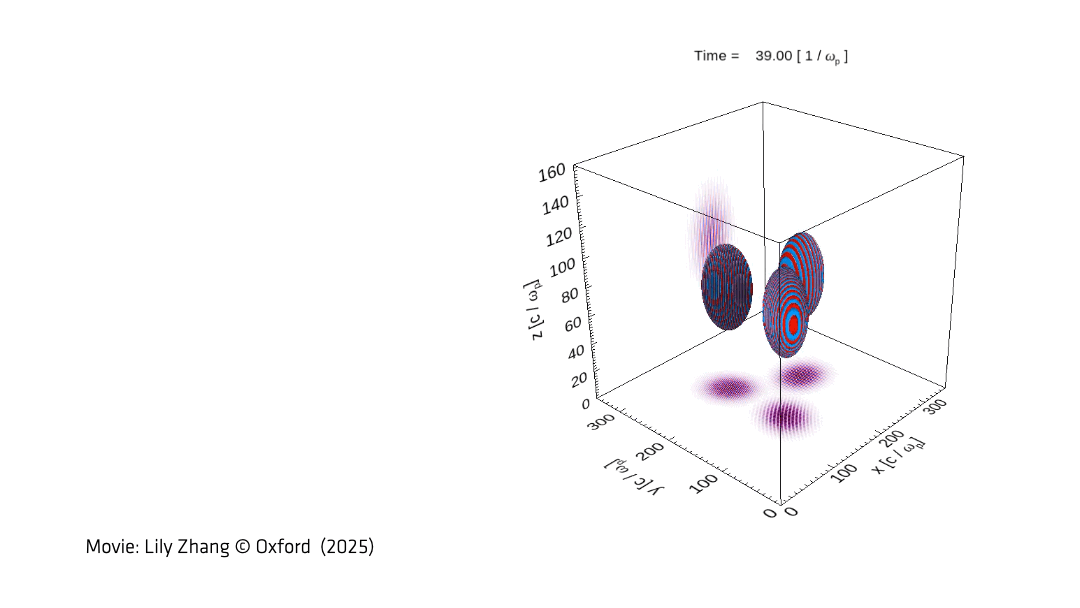
Computational Plasma Physics
To capture the physics underpinning extreme plasmas, kinetic plasma simulations are central. I am interested on understanding the (kinetic) physics of the most advanced numerical models and to use this knowledge to perform state-of-the-art simulations. | Collection of papers

Photon Kinetics
The more standard techniques to describe laser-plasma interactions do not capture naturally scenarios where the statistical properties of light (e.g. partially coherence or bandwidth) or the plasma (statistical fluctuation beyond thermal noise e.g. turbulence) can be important (for instance in laser fusion or in astrophysical sources). To address these scenarios, I have been exploring kinetic descriptions for classical fields inspired by the Wigner techniques from Quantum Mechanics. | Collection of papers

Laboratory Astrophysics and Shocks
I am being engaged in reproducing in the laboratory the astrophysical conditions associated with (extreme) plasma astrophysics, devising experimental configurations and contributing for the interpretation and the design of experiments. My recent focus has been on pair plasma beams (and their plasma instabilities), and shocks. | Collection of papers
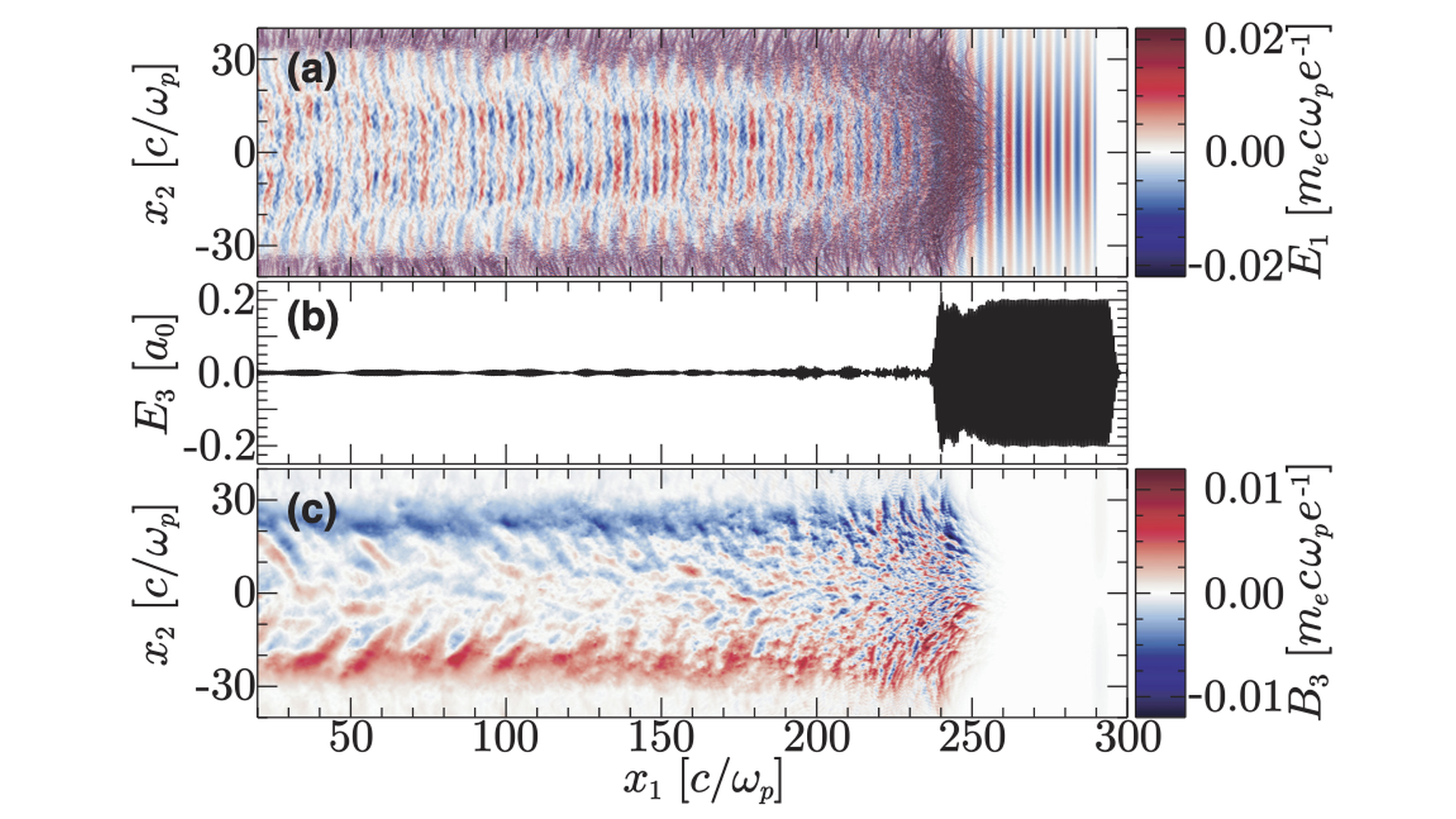
Inertial Fusion and Laser-Plasma Interactions
I am interested in advanced fusion concepts such as electron or proton fast ignition and on the control of laser-plasma instabilities. | Collection of papers
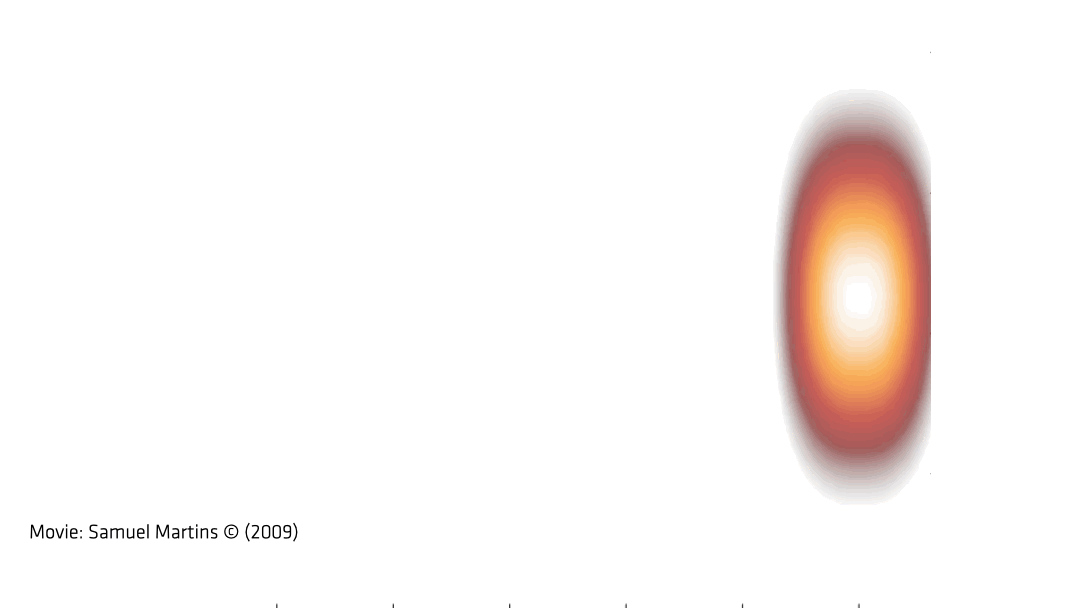
Laser and Plasma Accelerators
This is one of the most exciting applications of ultra intense lasers and particle beams at the frontier of science. I have been contributing to the study of laser-plasma accelerators at the 10 PW frontier and the associated radiation sources, including collaborations with experimental teams on the interpretation and theoretical support to their experiments. | Collection of papers
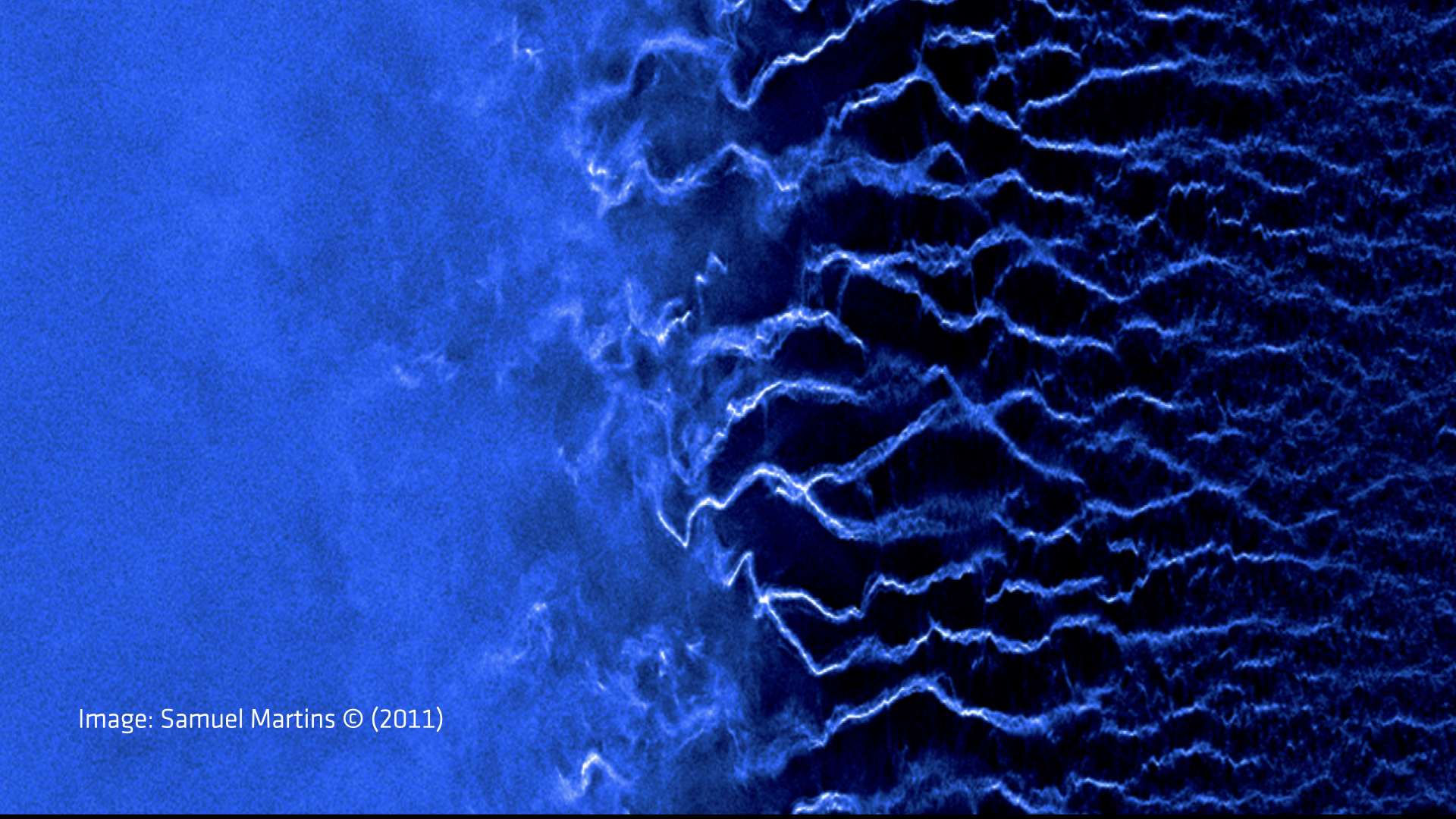
Plasma Astrophysics
Kinetic plasma physics around compact objects including QED and general relativity, their signatures and potential impact on astronomical observations. Recently, I have been interested on strongly radiative processes and the interplay between radiation reaction and general relativity in realistic field configurations, and on instabilities driven by photon winds. | Collection of papers
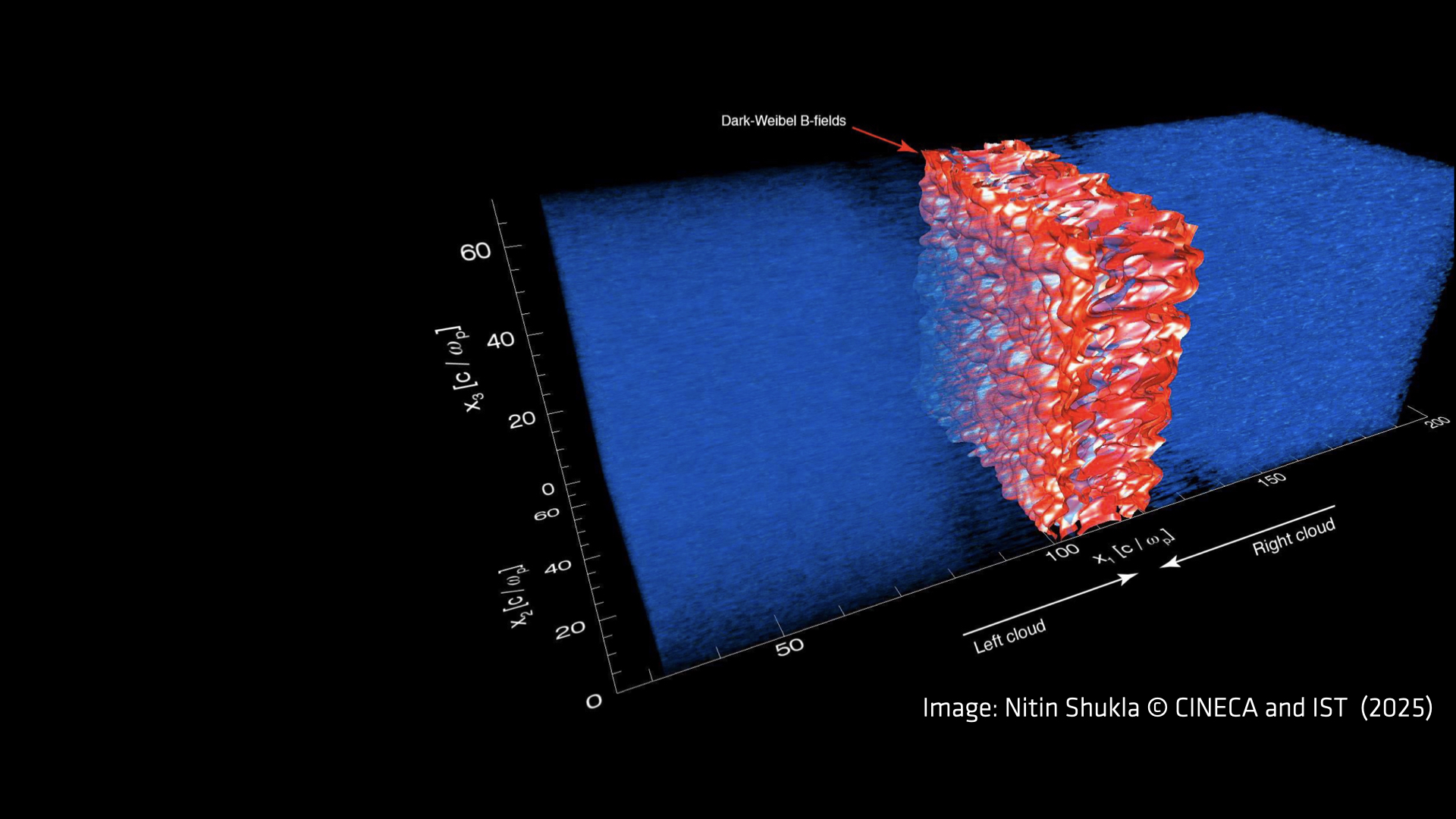
Fundamental Plasma Physics
The revolutionary leap in computational power is pushing our understanding of multidimensional plasma processes and instabilities across temporal and spatial scales, allowing to bridge the gap between scales, and understand their coupling. I have been approaching this problem from the electron kinetic scale, in unmagnetized systems, addressing plasma instabilities, magnetogenesis and onset of nonlinear regimes and turbulence. | Collection of papers
Image/movie credits (by order of appearance, top to bottom, left to right): T. Silva, T. Grismayer, L. Zhang (Oxford), L. O. Silva, S. F. Martins, T. Silva, S. F. Martins, S. F. Martins, N. Shukla